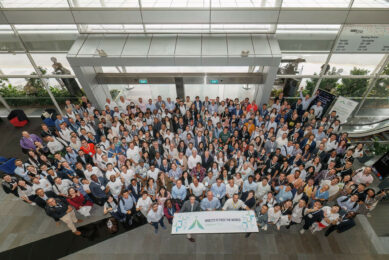Paris Grain Conference: A future marked by many uncertainties

Paris Grain Day returned in 2023 in a longer 2-day format as Paris Grain Conference on 26-27 January. A nice opportunity to hear 33 Argus and Agritel experts talk about the future of agricultural, fertiliser and biofuel markets.
“We wanted to go beyond the simple supply/demand balance of the international grain and oilseed markets by integrating the many other factors on which these markets depend, such as geopolitics, climate, fertilisers, energy,” said Michel Portier, Managing Director Agritel (Argus Media company), in his introduction.
Record stocks
For Nathan Cordier, Agritel Grain Analyst, despite the Russian-Ukrainian conflict, the 7 main wheat exporters experienced record flow levels from October 2022 to January 2023. “The world market presents record export availabilities by the end of June,” underlines Cordier. Russia which should export 20 Mt by the end of the campaign, and Australia which could export 2.6 to 2.8 Mt per month due to its record harvest.
Nathan Cordier underlines the record level of the main exporters’ end-of-season stocks (nearly 65 Mt), at their highest level since 2017/2018 for 2 reasons:
the importance of Russian stocks (21.9 Mt against 11.1 Mt in 2021/2022)
logistics issues.
“We are starting the new campaign in a situation very dependent on Russia,” summarises the analyst.

What about the next 2023/2024 campaign?
Ukraine – producing grain despite a very difficult situation
“The coming season is marked by a historic drop in wheat production expected in Ukraine, which should reach 15.2 Mt against 20.2 Mt in 2022/2023, its lowest harvest since 2007,” says Cordier. The drop in areas dedicated to wheat in the country follows the cash flow and logistics difficulties encountered by Ukrainian farmers, in addition to the wet autumn which limited the possibilities of sowing .
“We are a country at war and we continue to produce grain despite a very difficult situation,” said Nikolay Gorbachev, President of the Ukrainian Grain Association who came in person to Paris.
“Ukrainian farmers are in a completely unpredictable situation and the areas sown with wheat are expected to drop,” said Gorbachev, whose association forecasts wheat sown areas of 3 Mha in the optimistic scenario and 1.7 Mha in the pessimistic scenario.

United States – drought raging in southwest Kansas
On the other side of the Atlantic, the analyst is counting on a wheat supply which should remain low in the United States, in particular because of the drought which is raging in the southwest of Kansas where 20% of wheat is located. US production forecasts presented in Paris for the new campaign range from 54.6 Mt for Agritel to 49.3 Mt for HRW.
Australia – return of El Niño
In the southern hemisphere, after 3 years of La Niña, and an expected return of El Niño this summer, analysts expect Australian wheat production to fall to 26 Mt in 2023/24, or even less, after 2 records above 35 Mt.
Downward trend
“If we add to this overview a production estimated to be stable in Europe and rather down in Russia due to the weather, and average in Canada and Kazakhstan, the new campaign is characterised by a downward trend on the supply of the main exporting countries, with a situation in fragile equilibrium and with possible tensions on the markets,” concludes Cordier, hence the absence of room for any climatic hazards.
Logistic challenges
“After registering a decline of 3.6% in 2022, world maritime trade in grains is expected to increase by 3.9% in 2023,” estimates Guy Hindley from Howe Robinson Partners, a higher figure than the expected increase in world maritime trade in 2023 ( +1.2%). After a rain of negative factors in 2022, the expert foresees a more positive year in 2023, with in particular the return of China and the Asian market.
“The Russian-Ukrainian conflict has changed trading habits through the Suez Canal, the most important logistics corridor for the world grain trade,” explains then Hindley. Global seaborne grain trade through the Suez Canal dropped by almost 22% from 2021 to 2022, from 84.4 Mt to 66.1 Mt, and this drop reached almost 40% for outgoing seaborne grain trade of the Black Sea. Statistics from the Suez Canal Authority show a parallel increase in coal or iron exports from some countries (+50% coal exports from Australia, +30% iron from Canada).
“Uncertainties persist at all levels due to geopolitical, energy and economic tensions and more numerous climatic hazards. The prices of cereals and oilseeds, which are very sensitive to all these risks, should remain extremely volatile,” summarises Sébastien Poncelet, Development Director at Agritel.











